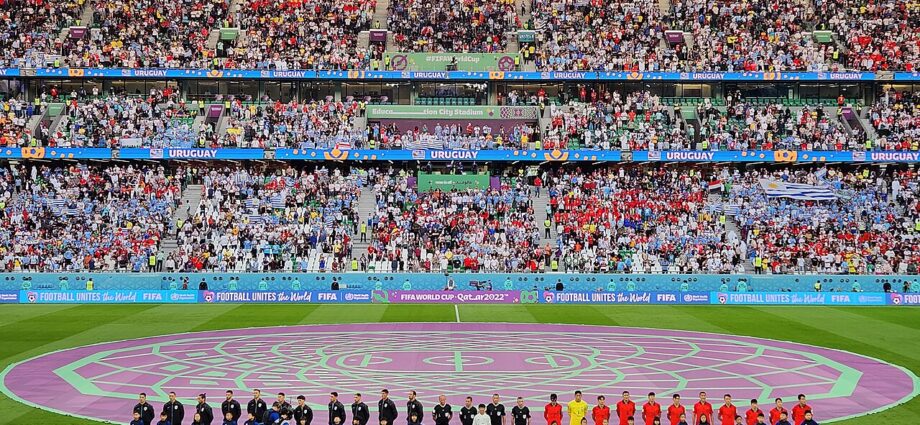
Experts and players alike are warning of increased health risks due to extreme heat, urging football’s governing body to act
July 25, 2025
Scientists are warning that without scheduling changes, extreme heat could put players and fans at serious risk during the 2026 FIFA World Cup, set to be co-hosted by the United States, Mexico, and Canada.
The recently concluded FIFA Club World Cup in the U.S. offered a troubling preview. Held from June 14 to July 13 across 11 cities, the tournament saw extreme heat and thunderstorms force FIFA to adapt protocols — adding extra cooling breaks, more water, shaded benches, and air fans. Some games were even postponed before kickoff or during the game due to weather conditions. Still, Chelsea midfielder Enzo Fernández said he felt dizzy and called on FIFA to avoid afternoon kickoffs next year.
With rising global temperatures, scientists say summer tournaments in the Northern Hemisphere are becoming more and more dangerous.
Summer football has been the norm since the first World Cup in 1930, but the climate has since shifted dramatically. According to the U.S. National Oceanic and Atmospheric Administration, the period between June and August has warmed by 1.05°C globally — and by 1.81°C in Europe — since then, with most of that increase occurring since the 1990s. Many organizations and experts warn that this will likely only get worse.
“The deeper we go in the decade, the greater the risk without considering more dramatic measures, such as playing in the winter months and/or cooler latitudes,” said the director of the Priestley Centre for Climate Futures in England, Professor Piers Forster. “I’m getting increasingly worried that we are only one heatwave away from a sporting tragedy and I would like to see governing bodies lean into the climate and health science.”
Climatologist Friederike Otto of Imperial College London said: “If you want to play football for 10 hours a day, they’ll have to be the hours of the early morning and late evening, if you don’t want to have players and fans die from heatstroke or get severely ill with heat exhaustion.”
The global players’ union FIFPRO has flagged six of the 16 U.S. World Cup cities as being at “extremely high risk” for heat stress. FIFA President Gianni Infantino has said covered stadiums will be used for daytime matches, but concerns remain as the number of participating teams expands from 32 to 48 for next year’s tournament, making scheduling even more complex.
The irony being that the expanded tournament is set to be the most polluting in FIFA’s history, according to a report by Scientists for Global Responsibility. Up to nine million metric tonnes of carbon dioxide equivalent are predicted to be released, close to double the average of the previous four editions of the tournament.
Health experts say the consequences of playing in intense heat are very real. “When players experience hyperthermia, they also experience an increase in cardiovascular strain,” said Julien Périard of the University of Canberra. If core temperatures climb too high, it can lead to muscle cramping, heat exhaustion, or life-threatening heat stroke.
Ollie Jay, a professor at the University of Sydney, noted that by 2023, athletes and even general sports hobbyists faced 28% more exposure to moderate or higher heat risk than in the 1990s.
Unlike other summer sports such as Olympic marathons and track events, which often shift to early or late hours to avoid the heat, football rarely uses morning kickoffs, largely due to European broadcast schedules.
This challenge will continue in 2030, when Spain, Portugal, and Morocco host the World Cup from mid-June to mid-July. All three countries experienced temperatures above 40°C this summer. Yet, FIFA’s internal bid evaluation downplayed the threat, stating that “weather conditions are difficult to predict with the current development in global and local climate, but are unlikely to affect the health of players or other participants.”
In 2022, FIFA broke tradition by relocating the World Cup to Qatar in winter to avoid extreme summer heat. A similar adjustment is expected when Saudi Arabia hosts in 2034. But moving the tournament out of summer disrupts domestic and Champions League calendars, making such changes politically and logistically challenging.
“This is symbolic of something bigger,” said climate scientist Michael Mann of the University of Pennsylvania. “Not just the danger and inconvenience to fans and players, but the fundamentally disruptive nature of climate change when it comes to our current way of life.”
The world’s most popular tournament for the world’s most popular sport now faces a stark choice: adapt to the climate crisis or risk the health and safety of players, staff, and fans alike.
Subscribe to our newsletter.
This article was originally published on IMPAKTER. Read the original article.

